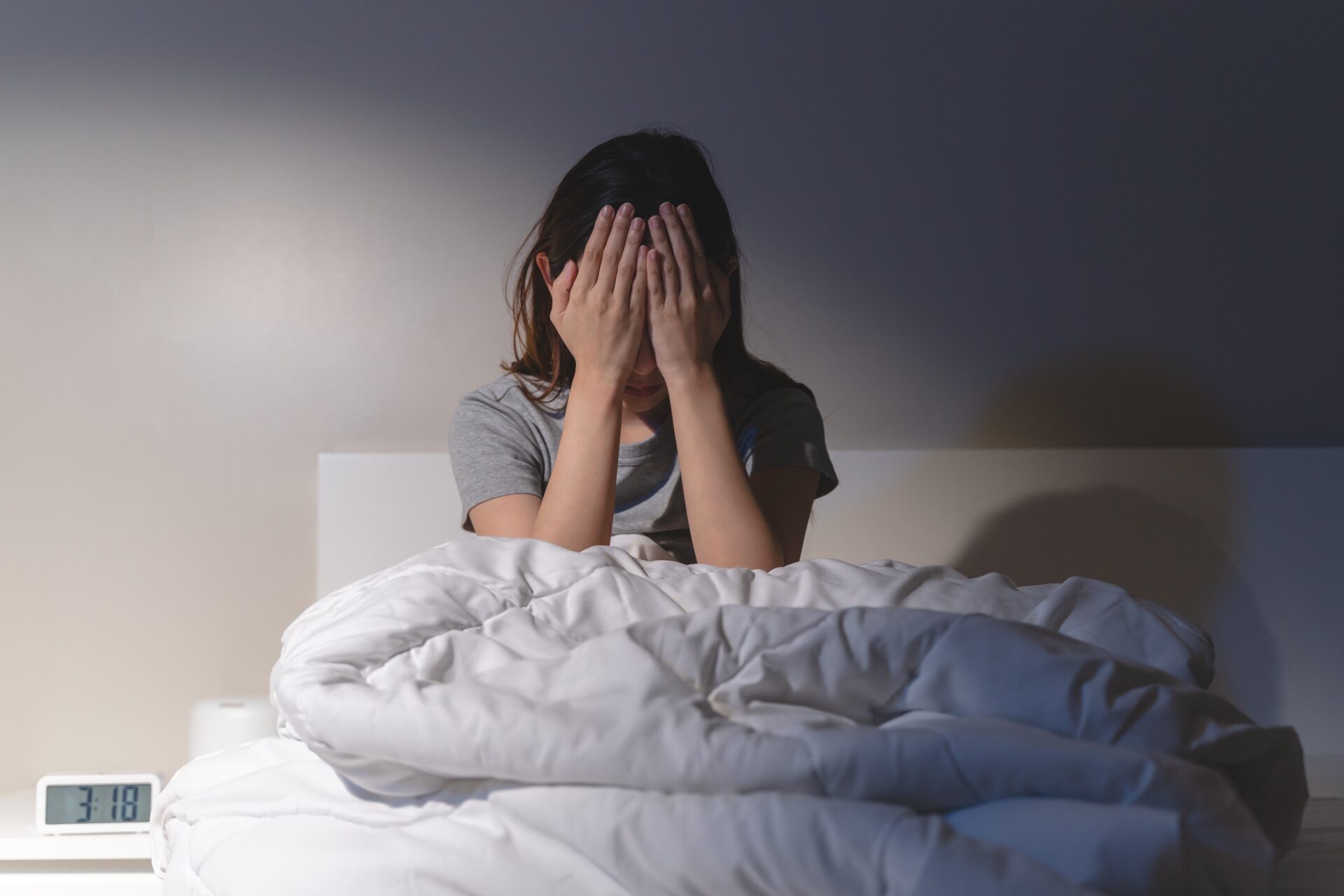Recognizing the Symptoms and Effects of Anxiety
Anxiety is a natural response to perceived threats or stress, often marked by feelings of worry, nervousness, or unease. While occasional anxiety is a part of life, persistent symptoms can disrupt daily functioning and overall well-being. Identifying early signs is an important step toward managing anxiety before it escalates.
By recognizing how anxiety affects both the mind and body, individuals are better equipped to manage it in ways that support long-term mental health.

Understanding the Stress Response
The stress response begins in the brain. When a stressful event occurs, the amygdala, which is the part of the brain involved in emotional processing, activates. It sends signals to the hypothalamus, which is the part of the brain that communicates with the rest of the body through the autonomic nervous system [1].
This system controls involuntary body functions like breathing, blood pressure, heartbeat, the dilation or constriction of blood vessels, and constriction of small airways in the lungs [1]. The purpose of relaying signals here is to initiate the physiological changes that equip the human body to respond with either fight or flight.
These physical changes occur almost instantaneously, usually without conscious awareness. The pathway between the amygdala and hypothalamus is so efficient that the stress response is initiated before the brain’s visual centers have fully processed the threat [1].
This rapid activation enables individuals to react, such as moving out of the way of an oncoming car, before they have time to consciously assess the situation.
The Symptoms of Anxiety
Anxiety doesn’t look the same for everyone, but its symptoms typically fall under three broad categories: physical, emotional and cognitive. Understanding these early signs helps reduce stigma through awareness and increases the chances of getting support before anxiety becomes overwhelming [2].
Physical Symptoms of Anxiety
The body often sends the first signals that anxiety is present. Physical symptoms like anxiety-related chest pains can be intense and sometimes mistaken for medical emergencies like heart problems or digestive issues.
This often leads them to be misunderstood and misdiagnosed, which is why it’s important to be informed of the physiological underpinnings of anxiety.
Common physical symptoms include:
- Shortness of breath
- Rapid heart rate or palpitations
- Chest pain or tightness
- Dizziness
- Nausea or gastrointestinal issues
- Sweating or shaking
Research has shown that anxiety activates the autonomic nervous system, which prepares the body for a perceived threat, even when no danger is present [2].
Emotional Symptoms of Anxiety
Anxiety can weigh heavily on emotion health. These symptoms tend to be persistent and hard to explain, which makes them easy to dismiss or misunderstand. Emotionally, anxiety keeps the nervous system in a heightened state of alert, even when no real danger is present.
Common emotional symptoms include:
- Persistent Dread or Unease: Individuals may carry a constant sense of fear that doesn’t seem connected to anything specific. This state of emotional tension can feel like something bad is about to happen even when nothing is objectively wrong.
- Feeling “On Edge” or Overly Reactive: Anxiety primes the brain to look for threats. This can result in emotional hypersensitivity, where someone reacts strongly to minor stressors or changes in routine.
- Irritability or Emotional Overwhelm: Small frustrations may feel amplified when emotions are high. When someone’s nervous system is constantly activated, their emotional tolerance decreases, and they may feel easily overwhelmed by everyday situations [3].
Cognitive Symptoms of Anxiety
Anxiety doesn’t just affect how people feel but it also changes how they think. It alters attention, perception as well as memory processing in ways that can be exhausting. Individuals often report difficulty concentrating, racing thoughts, or trouble making decisions.
Common cognitive symptoms include:
- Racing Thoughts: These are fast, looping streams of worry or mental chatter that can feel impossible to shut off. They often jump from one concern to another, leaving a person mentally drained and emotionally scattered.
- Overthinking or Rumination: Anxiety makes it hard to let go of thoughts. People may replay conversations and imagine worst-case scenarios. While this may feel productive, it often leads to more stress.
- Catastrophic Thinking: A small problem can suddenly feel like a disaster. Distortions in thought patterns comes from the brain’s threat-monitoring systems being overly active, which can make unlikely scenarios seem probable or inevitable.
- Trouble Focusing or Making Decisions: When the brain is overwhelmed with fear-based thoughts, it’s harder to prioritize or make decisions, even simple ones. This can lead to frustration and self-doubt, which feed back into anxiety [3].
Effects of Untreated Anxiety
When left untreated, symptoms of anxiety may evolve into panic attacks, chronic stress, and eventual avoidance of triggers. This has detrimental consequences for a person’s overall well-being as it impacts their physical health, relationships, and quality of life. One such health risk is high blood pressure caused by anxiety, which compounds the effects of stress on the body over time.
Socially, it may cause people to withdraw from situations they once enjoyed. Occupationally, it can reduce productivity at work and contribute to burnout due to the changes in attention and focus. Research shows that the longer anxiety persists without intervention, the more likely it is to become entrenched in both thought patterns and the body’s biological stress systems.
When anxiety goes untreated, it can affect nearly every area of a person’s life. It can:
- Affect mental health by contributing to depression, substance use, or low self-worth
- Disrupt physical health, often showing up as sleep problems, stomach issues, or a weakened immune system
- Take a toll on emotional well-being, making people feel more irritable, hopeless, or emotionally reactive
- Create distance in relationships, especially when anxiety leads to withdrawal or disconnection
- Interfere with work or school by making it harder to concentrate, stay motivated, or meet deadlines
- Impact academic performance in students who struggle with memory, focus, or class participation
- Cause financial strain, especially if anxiety affects job stability or the ability to manage daily tasks
- Make everyday things like running errands, cooking, or personal care feel overwhelming
These effects don’t appear all at once but over time they can compound and make daily life feel harder to manage.
Studies have found that chronic anxiety can reinforce unhelpful thought patterns and heighten physiological reactivity, making it harder to “turn off” the stress response over time, even in safe environments. This is why early recognition and timely interventions are necessary [4].
Common Treatment Options for Anxiety
There are several effective strategies to treat anxiety, and the best approach often depends on a person’s symptoms, preferences, and overall lifestyle. These methods can be used individually or in combination for a more comprehensive treatment plan:
- Cognitive Behavioral Therapy (CBT): CBT is a widely recommended therapy that focuses on helping individuals recognize unhelpful thoughts and develop more balanced ways of thinking. It is structured, goal-oriented, and has strong evidence supporting its effectiveness for many anxiety disorders, including panic disorder and generalized anxiety disorder.
- Medication: For individuals with moderate to severe anxiety, medication can be an important part of treatment. Selective serotonin reuptake inhibitors (SSRIs) are commonly prescribed and are considered safe and effective for long-term use. They work by regulating brain chemistry and can help reduce both the emotional and physical symptoms of anxiety.
- Combined Treatment: In some cases, combining therapy and medication provides greater relief than either option alone. This approach may be especially helpful when anxiety has been long-standing or significantly disrupts daily life.
The most effective treatment is one that feels manageable, empowering, and tailored to each person’s unique experience. With the right support, managing symptoms of anxiety not only becomes possible but also sustainable [5].
Supporting Anxiety Through Lifestyle Changes
Lifestyle habits play a meaningful role in managing anxiety. While diet and exercise often get the spotlight, other daily choices can also make a significant difference in how symptoms show up and how well they’re managed. These include:
- Sleep: A consistent sleep schedule helps the brain and body recover from stress and supports emotional stability.
- Movement: Regular physical activity reduces physical tension and can ease both mental and emotional symptoms, including anxiety-induced nausea.
- Mindfulness and Self-Regulation: Practices like meditation or focused breathing promote calm and can reduce the intensity of anxious thoughts.
- Substance Reduction: Limiting caffeine, alcohol, or other stimulants lowers overstimulation and helps keep symptoms more manageable.
- Social Connection: Spending time with trusted people can ease worry, build a sense of safety, and reduce feelings of isolation.
- Time in Nature: Natural light and greenery have been shown to lower anxiety and improve focus even in small doses.
These habits may not replace clinical care, but they can work alongside therapy or medication to support a more holistic and sustainable approach to managing anxiety [6].
Understanding the Impact of Anxiety
Anxiety is more than just the way people think and feel, it can cause significant changes throughout the body and mind. Recognizing that anxiety is a real and valid condition is the first step towards treatment.
Taking action early starts with understanding the symptoms and effects of anxiety, and this can prevent symptoms from escalating. With access to the right tools, individuals can develop a greater sense of control over their mental health.
It’s also important to remember that recovery isn’t about eliminating anxiety completely but learning how to navigate it with confidence and compassion. No matter where someone is in their journey, mental health support is available.
- Harvard Health Publishing. (2018, July). Understanding the stress response. Harvard Medical School. https://www.health.harvard.edu/staying-healthy/understanding-the-stress-response. Accessed May 1, 2025.
- Hoehn-Saric, R., & McLeod, D. R. (2000). Anxiety and arousal: Physiological changes and their perception. Journal of Affective Disorders, 61(3), 217–224. https://doi.org/10.1016/S0165-0327(00)00339-6 | Accessed May 1, 2025.
- McNaughton, N. (2016). What is anxiety and how should we treat it? Retrieved from https://www.researchgate.net/publication/291904855. Accessed May 1, 2025.
- Scott, A. J., Bisby, M. A., Heriseanu, A. I., Hathway, T., Karin, E., Gandy, M., Dudeney, J., Staples, L. G., Titov, N., & Dear, B. F. (2022). Understanding the untreated course of anxiety disorders in treatment-seeking samples: A systematic review and meta-analysis. Journal of Anxiety Disorders, 89, 102590. https://doi.org/10.1016/j.janxdis.2022.102590 | Accessed May 1, 2025.
- Bandelow, B., Lichte, T., Rudolf, S., Wiltink, J., & Beutel, E. M. (2014). The diagnosis of and treatment recommendations for anxiety disorders. Deutsches Ärzteblatt International, 111(27-28), 473. https://pmc.ncbi.nlm.nih.gov/articles/PMC4187407/. Accessed May 1, 2025.
- Piotrowski, M. C., Lunsford, J., & Gaynes, B. N. (2021). Lifestyle psychiatry for depression and anxiety: Beyond diet and exercise. Lifestyle Medicine, 2(1), e21. https://onlinelibrary.wiley.com/doi/full/10.1002/lim2.21. Accessed May 1, 2025.
The Clinical Affairs Team at MentalHealth.com is a dedicated group of medical professionals with diverse and extensive clinical experience. They actively contribute to the development of content, products, and services, and meticulously review all medical material before publication to ensure accuracy and alignment with current research and conversations in mental health. For more information, please visit the Editorial Policy.
MentalHealth.com is a health technology company guiding people towards self-understanding and connection. The platform provides reliable resources, accessible services, and nurturing communities. Its purpose is to educate, support, and empower people in their pursuit of well-being.
Areesha Hosmer is a writer with an academic background in psychology and a focus on Cognitive-Behavioral Therapy (CBT).
Holly Schiff, Psy.D., is a licensed clinical psychologist specializing in the treatment of children, young adults, and their families.
The Clinical Affairs Team at MentalHealth.com is a dedicated group of medical professionals with diverse and extensive clinical experience. They actively contribute to the development of content, products, and services, and meticulously review all medical material before publication to ensure accuracy and alignment with current research and conversations in mental health. For more information, please visit the Editorial Policy.
MentalHealth.com is a health technology company guiding people towards self-understanding and connection. The platform provides reliable resources, accessible services, and nurturing communities. Its purpose is to educate, support, and empower people in their pursuit of well-being.


